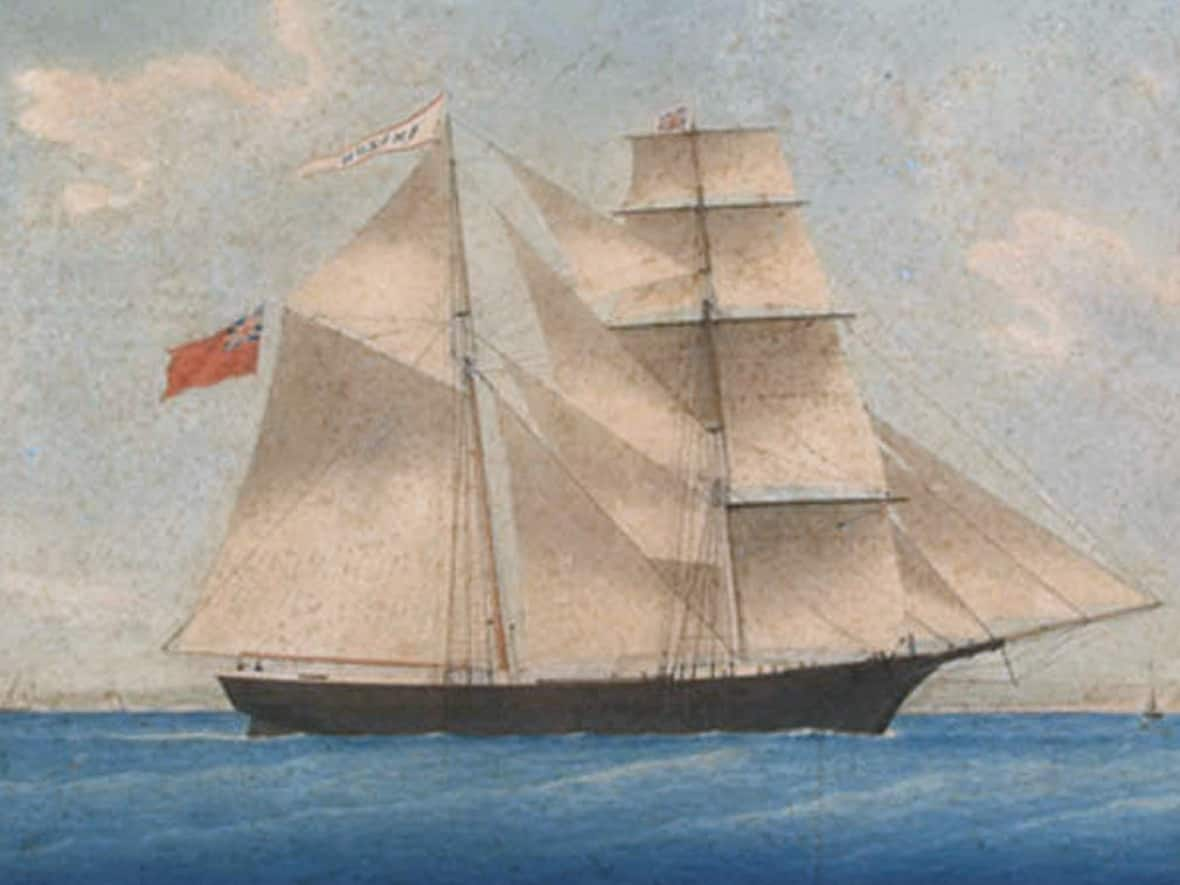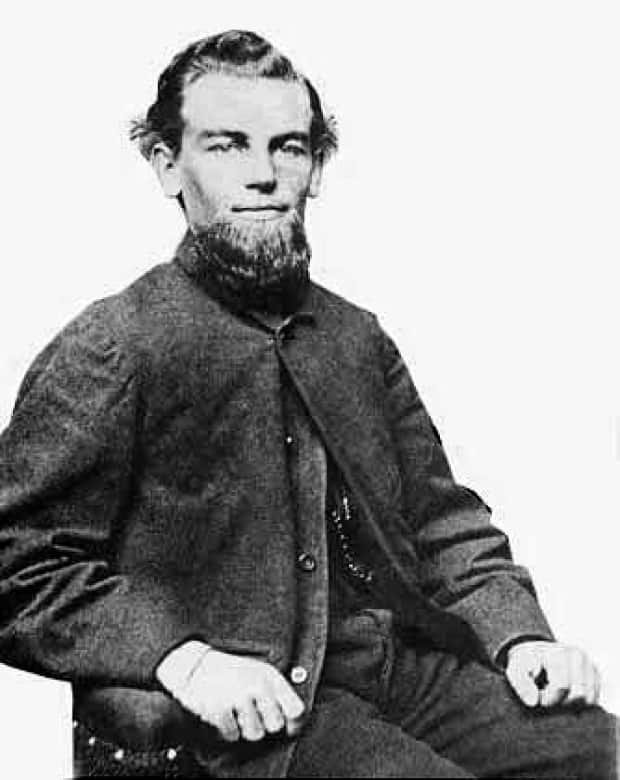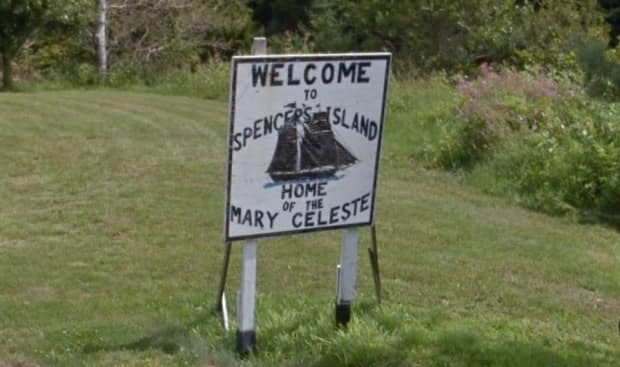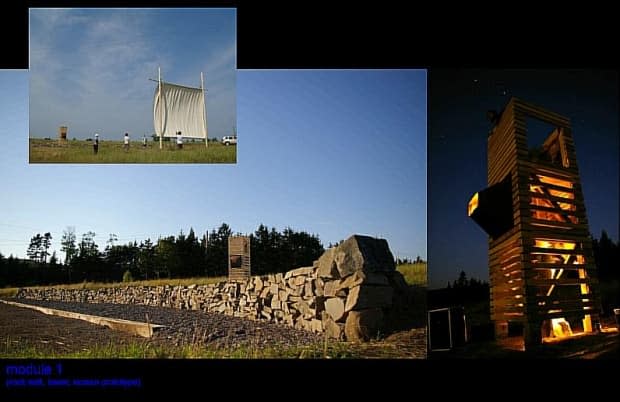A N.S. ghost ship is fading from memory — 150 years after its crew disappeared

A Nova Scotia sailing ship is at the heart of a 150-year-old mystery, one that is drifting away from public consciousness.
Over the years, the story of the Mary Celeste and its ill-fated crew has been told in books, documentaries, radio, television and film, but it is little spoken about in Nova Scotia
Roger Marsters, curator of marine history for the Nova Scotia Museum, says while he gets many questions about the Titanic, no one has asked him about the Mary Celeste in his eight years at the Maritime Museum of the Atlantic.
But he says it deserves to live on in lore because of the light it sheds on the rich maritime history of Nova Scotia.
"It does have its roots in Nova Scotia, given the extent of our involvement in ... the global maritime economy of the late 19th century," he said.
"The sheer volume of our involvement in seafaring at the time make these remarkable coincidences seem a little less coincidental. It is in many ways an index of the extent of the region's historic involvement with the sea."

In December 1872, the Nova Scotia ship Dei Gratia discovered the Mary Celeste, another Nova Scotia-built brigantine, drifting several hundred miles off the Azores with no one on board.
Speculation in newspapers, and a story by Arthur Conan Doyle, led to it becoming the world's most famous ghost ship.
The ship, then called the Amazon, was built at Spencers Island in 1861 during Nova Scotia's prime years as a shipbuilding power, according to Marsters.
Although the age of sail was already coming to an end, the Amazon was built as a brigantine, a two-masted vessel.
"It was a very versatile vessel that was well suited to the sorts of trades that Nova Scotians were engaged in at that time," Marsters said.
Troubled history
Writing about the mystery in the 1944 pamphlet In the Wake of the Mary Celeste, James Franklin Briggs, the nephew of the ship's captain, notes that the years leading up to 1872 were not all clear sailing for the Amazon.
On the ship's maiden commercial voyage shortly after being registered in Parrsboro, N.S., its captain — Robert McLellan of Economy, N.S. — became ill, forcing the ship back to port, McLellan died a few days later.
The ship was wrecked at least once by 1867, underwent repairs, and changed hands twice before being sold in New York as a wrecked vessel in 1868.
The new owner undertook costly repairs and registered the ship as American. It was renamed Mary Celeste.
The ship was sold again 10 months later to Capt. James Winchester in 1869.
Winchester made major changes to the ship and sold a third of the shares in it to Capt. Benjamin Spooner Briggs.

The Mary Celeste set sail from New York on Nov. 7 bound for Genoa, Italy. It was loaded with 1,700 barrels of alcohol. Briggs was at the helm.
Also on board were his wife, Sarah, his two-year-old daughter, Sophia, seven crew members and a cat.
They were never seen again.
Marsters said it was a common practice at the time for the captains of ships to take their family and pets on voyages.
Discovered adrift
On Dec. 4, the Dei Gratia was sailing toward Gibraltar from New York when it encountered the Mary Celeste.
The captain of the Dei Gratia, David Reed Morehouse, recognized the ship immediately.
Upon boarding the Mary Celeste, they found the only lifeboat on the ship was missing. The sails were ragged.
There was some water in the hull, but the vessel was still seaworthy and there was ample food and water. The cargo was largely intact.
The last entry in the logbook on Nov. 24, with a draft entry made on Nov. 25, made no mention of what had happened.
The Dei Gratia towed the abandoned ship to Gibraltar, where a salvage hearing was held.
Speculation was rife
Morehouse and his crew were absolved of accusations that they had engaged in an act of piracy, but he received only a small portion of the salvage value of the ship.
Newspapers at the time were full of speculation about what had happened to those on board.
Marsters says the contemporary view is that the crew became fearful that alcohol vapours on the ship would ignite and temporarily boarded a lifeboat that became detached.
The Mary Celeste returned to sailing in 1873 but was thought of as cursed. It was deliberately wrecked off Haiti in 1885 in what was determined to be a case of insurance fraud.
Sherlock Holmes connection
Just over a decade later, in 1884, Arthur Conan Doyle, the man who would create Sherlock Holmes, wrote a story that was published anonymously in Cornhill Magazine. At the time Doyle was a 25-year-old ship's doctor.
In J. Habakuk Jephson's Statement, Doyle wrote a fictionalized first hand account of a survivor of the Mary Celeste.
The story changed many details of the real incident, added a race-based plot and renamed the ship the Marie Celeste. It was so popular that even today many people use the fictionalized name to refer to the real ship.
JoAnn Alberstat, co-editor of the literary journal Canadian Holmes, said Doyle's interest in the Mary Celeste shows that hearing the story made an impression on him as a young boy and that it was still in the consciousness of British people.
Alberstat said Doyle was so pleased with the success of his story it changed the course of his life.
"The story went a long way toward launching his career as a writer rather than a doctor, getting him away from medicine which he eventually stopped practising as a young man in favour of becoming a full-time author," Alberstat said.
"it's interesting this story was published three years before Conan Doyle's first Sherlock Holmes story, which was A Study in Scarlet.

Spencers Island today
In Spencers Island today, there are few reminders that it the birthplace of a ship that captured the attention of the world.
There is a small painted sign with a picture of the ship welcoming people to Spencers island as "Home of the Mary Celeste," and a monument with a plaque at the waterfront.
The weathered plaque carries a short summary of the history of the ship and its connection to the community.
"Nearby the world's most famous mystery ship, "The Mary Celeste," a brigantine, was built and launched in 1861," it says.

Full-scale replica
Laurie Currie, who runs a tour business and whose family has lived in Spencers Island for generations, said he has always dreamed of having a replica of the ship built in the community.
He originally hoped that a full-scale replica could be built that would sail around the world telling the story of the Mary Celeste, but eventually scaled his idea down to a smaller replica that could be used locally for teaching purposes.
Currie's dreams came closer to reality after meeting with Roger Mullin, a professor of architecture at Dalhousie University.
For three years, starting in 2007, a summer campus of sorts was set up at Spencers Island that created an outdoor theatre and performance space, classrooms and an interpretive centre on land owned by Currie.
The theatre space featured a rock wall that followed the shape and dimensions of the Mary Celeste.
According to Currie, community interest dwindled and the project did not get funding to continue.
MORE TOP STORIES


